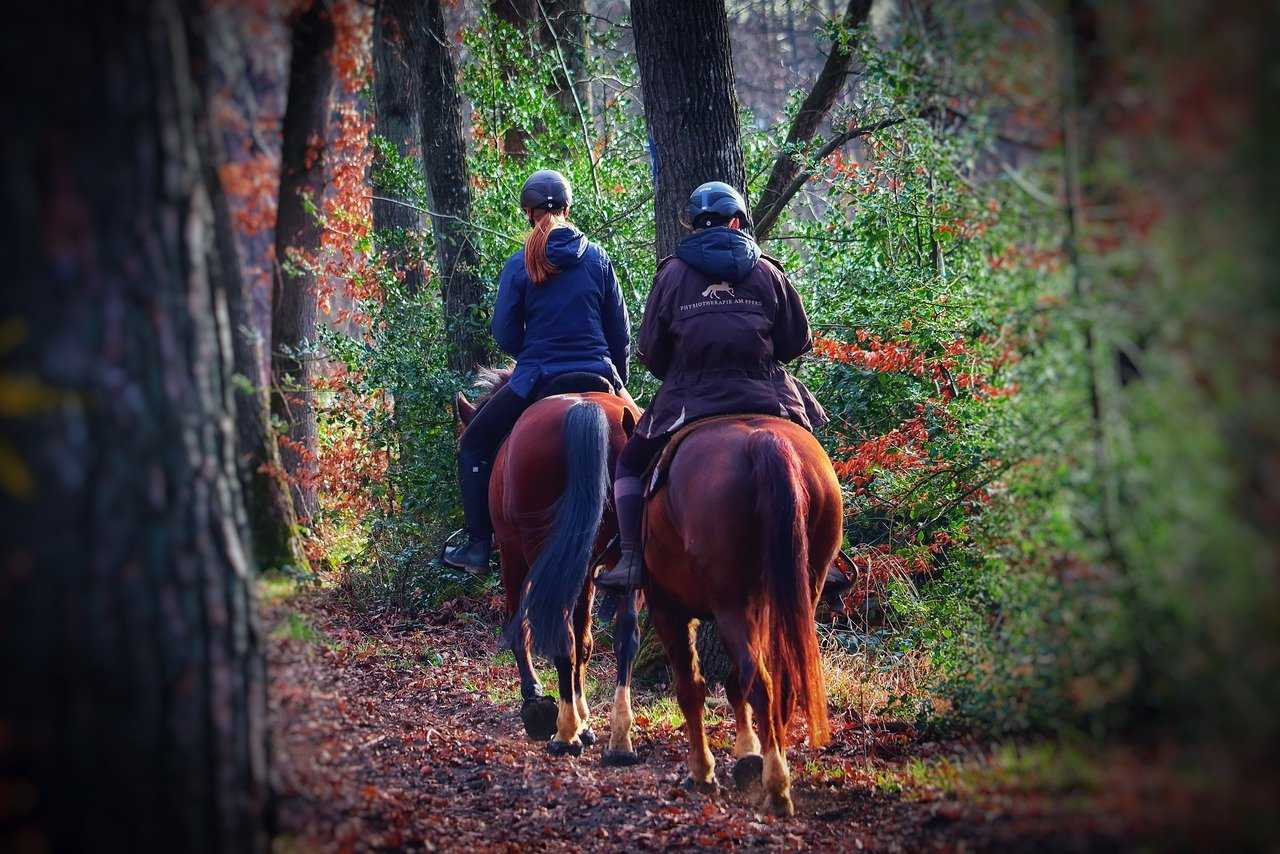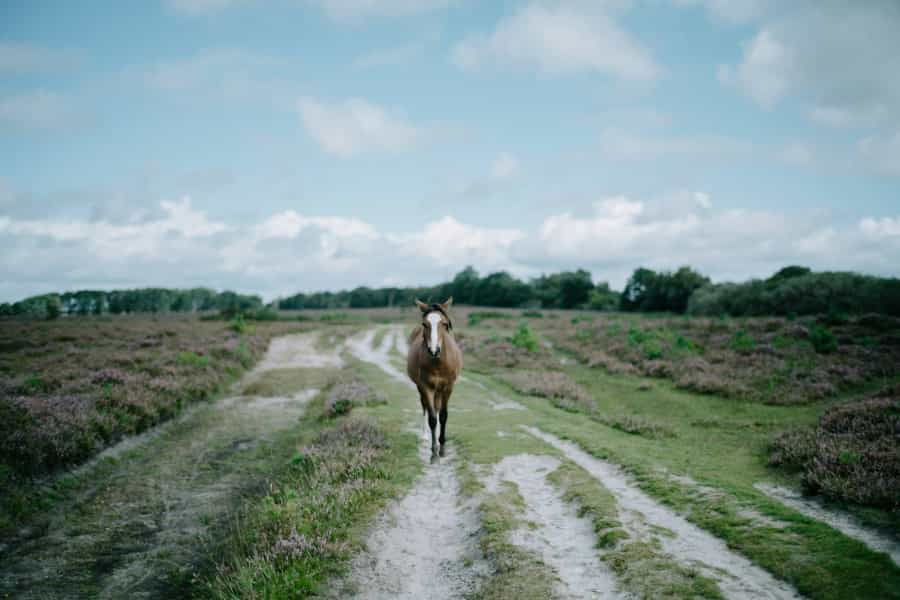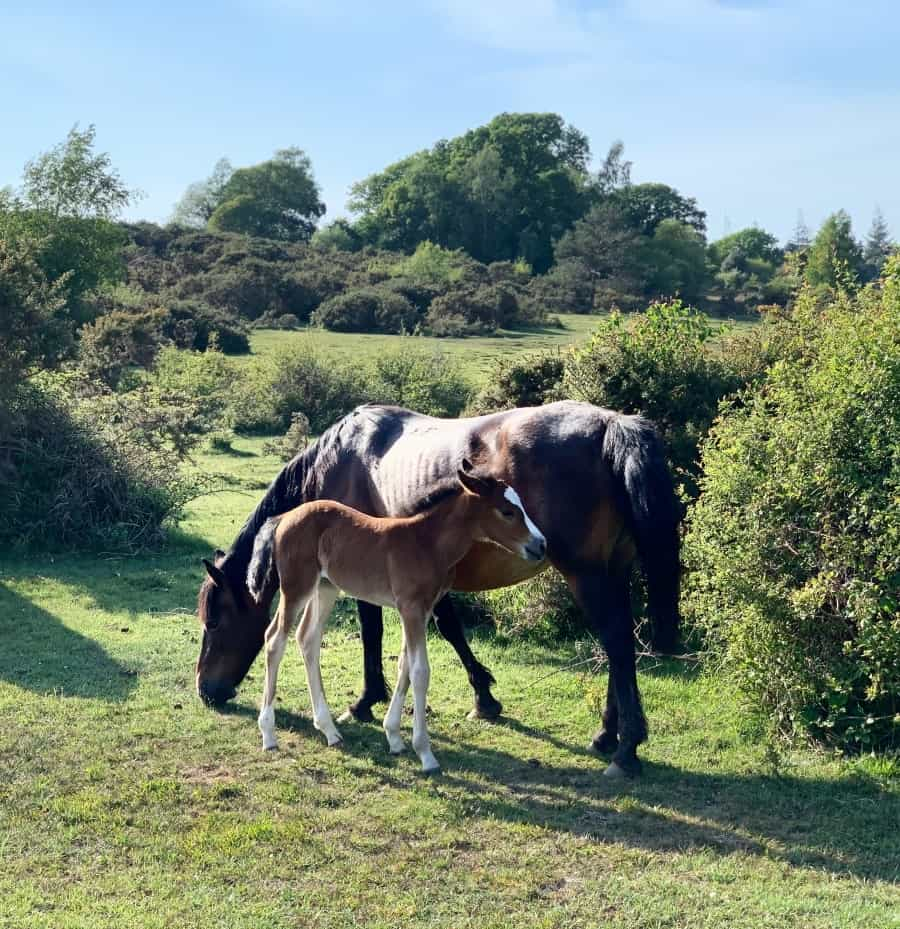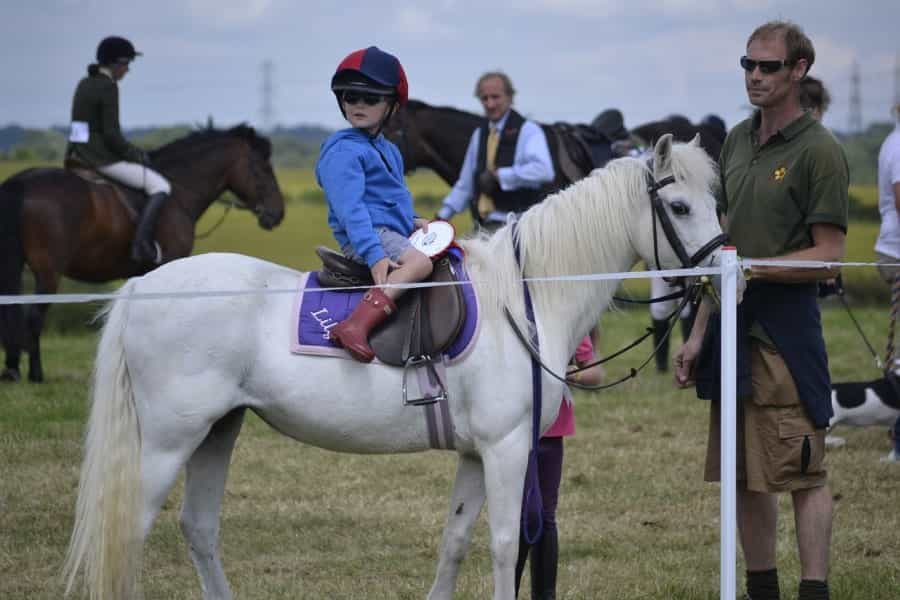New Forest Horse Riding

The New Forest is synonymous with its thousands of free-roaming, semi-feral ponies who have lived in the park for at least two thousand years – and possibly since the last Ice Age – shaping its unique environment of close-cropped commons between stands of woodland. Exploring this little-changed landscape on horseback means riders can reconnect with centuries of heritage as they hack through the national park’s ancient woodlands, grassy glades and open heathland – scenery that looks pretty much as it did when William the Conqueror claimed the forest as his own private hunting ground in 1079.
Here at Pitchup, we’ve created the definitive guide to horse riding in the New Forest National Park, suggesting the best hacks, advising on ways to keep safe and tracing the history of the iconic New Forest pony.
The New Forest pony

Ponies have played a part in the backstory of the New Forest since time immemorial; they were originally used as packhorses or working animals on smallholdings. Today their grazing habits play a vital role in keeping the scrub and heathland open and accessible to all; they have created an ecosystem that allows birds like Dartford warblers and insects such as southern damselflies to thrive.
As the animals are free to graze and roam wherever they please, there are occasionally accidents in the park; there’s a hotline you must call (by law) if you collide with a pony (or indeed any other animal) while driving in the forest, or see one that is injured.
What is a New Forest pony?
The New Forest pony has long been a distinct, registered breed, but its ancestry includes genes from – among others – Welsh, Fell, Exmoor and Dartmoor stock. Although they come in many colours, they are most commonly bay or chestnut, and should only have white markings on their heads and lower limbs. They have no minimum height but cannot be over 14.2 hands (148cm). This size makes them great riding ponies, as they are strong enough to carry adults and yet narrow enough for small children to ride too.
Who owns the New Forest ponies?
Each New Forest pony is owned and cared for by a New Forest Commoner – someone whose property historically had grazing rights back in the day when the forest was William’s royal playground. Commoners are responsible for the welfare of their animals and must ensure that they are branded.
The New Forest ponies are all registered with the Verderers Court, which dates from 1217 and still oversees certain archaic laws in the forest, and their day-to-day care is looked after by Agisters, who attend road accidents involving the ponies and oversee their treatment for any injuries, as well as managing the annual autumn ‘drift’ or round-up for health checks and branding.
Should you want to buy a New Forest pony, between 80 and 120 are auctioned at the Beaulieu Pony Sales, held four times a year.
Good to know: Please don’t feed the ponies! They have plenty of grass for spring and summer grazing, and eat gorse, brambles and holly in winter. And always remember that they are not tame – one end bites and the other kicks, especially when mares have foals with them!

Best New Forest trails for horse riding
A hack in the New Forest is the perfect way to discover undulating heathlands and ancient woodlands on traffic-free off-road bridleways. Although there are some demanding routes for expert equestrians, the open landscapes of the national park are ideal for novice riders or anyone after a quiet hack while admiring the view – and do keep your eyes peeled for wildlife along the way; no doubt you’ll see cattle, sheep, donkeys and New Forest ponies grazing on the commons, and perhaps fallow or red deer among the trees.
Acres Down Woodland
Distance: 2.5 miles (4.2 km)
Horse box parking: Acres Down car park (note you have to drive to through a ford to get there)
This short circular hack on wide gravel tracks through woodland has no great challenges so it’s one for beginners looking to gain confidence. As an added bonus, it’s virtually guaranteed that you’ll get to see New Forest ponies grazing nonchalantly yards away from you.
There’s a tea room a couple of minutes’ stroll away from the car park as well as a farm shop selling snacks and ice creams.
Fritham Circular
Distance: 5.5 miles (9 km)
Horse box parking: Fritham car park, hidden among trees just off Forest Road
Recommended for intermediates upwards, this scenic circular trail takes in open grassland and stands of pine or deciduous trees, following a wide, way-marked gravel trail through Amberwood and Sloden inclosures (woodland copses). You’ll have far-reaching views over hilltops coated in bracken, and the ride is particularly pretty in spring when wildflowers burst into bloom.
Look out for grazing cattle and herds of wild ponies. There’s a very welcome thatched pub near the car park for a refreshing pint after your ride.
Good to know: Confident riders have the option of a much longer and quieter hack – the paths split in Sloden Inclosure and are clearly signposted.
Riding schools and equestrian services
There are about a dozen riding schools all across the national park, some offering expert tuition in indoor arenas or manèges, and others leading guided hacks into the New Forest on horses and ponies matched carefully to individual ability. You can have a go at Western trail riding, but you’ll need to book before you visit. If you’re thinking about bringing your own horse or pony to the New Forest, the park authorities have a list of approved livery stables.
There are equestrian shops in Brockenhurst, Fordingbridge and Ringwood, and you can also pick up tack, clothing and all things horsey at the annual New Forest and Hampshire County Show, which is held at Brockenhurst in late July.

Riding for visitors with disabilities
The New Forest National Park follows an open-access policy and is keen to promote riding and other equestrian sports as being excellent therapy for the heart, body and soul. Visitors with disabilities – whether physical or mental – can enjoy riding and carriage driving within the park.
-
Emotionally disturbed and mobility-impaired riders are also catered for at the The New Forest Riding and Watersports Centre, with hacks on the leading rein around the perimeter of the forest and lessons for blind riders in the indoor school.
- At New Forest Carriage Driving for the Disabled, visitors with mobility issues can take the reins and have a go at carriage driving. If you’d like to support this worthy charity, please consider volunteering your time to help out or fundraise on their behalf.
Tips for horse riding in the New Forest
Riders have open access to the New Forest’s bridleways and trails, but must respect all warning signs and keep to public rights of way; you can see them on Ordnance Survey maps, marked as fingerposts and/or blue arrows or dots. And please remember that while galloping across open countryside is exhilarating, the national park is a very fragile environment, so to preserve it for the future, always follow the riding code of conduct.
Bear the following in mind at all times:
-
Hack slowly on soft ground.
-
Stay on gravel tracks when the ground is wet (and from March through to late July when birds are nesting on the ground).
-
Never ride more than two abreast and keep groups to a maximum of eight horses when on the roads.
-
Always carry a mobile phone with you, in the unlikely case that there is an accident.
What to wear
The following is a basic list of essential safety equipment for all riders, whatever their experience.
-
A hard riding hat.
-
Comfy boots with small heels.
-
Comfortable jodhpurs or jeans, and layers like T-shirts topped with waterproof fleeces or jackets or a high-viz tabard.
-
A long waterproof coat if it’s raining.
-
Carry fly repellant, lip balm and sunscreen in summer.
The New Forest is a fantastic destination for equestrians of all levels, but please respect the fragility of its ecosystem and follow the rules set out by the park authorities. You can also explore the national park while cycling, and if you are visiting with non-riders, there’s also a wealth of cultural activities to enjoy.
There’s accommodation of all prices and styles in the New Forest, but should you be looking to stay in the open air, check out Pitchup’s options for camping with family. If you fancy a few more luxuries along with your alfresco adventure, we have some rather fabulous glamping options too.